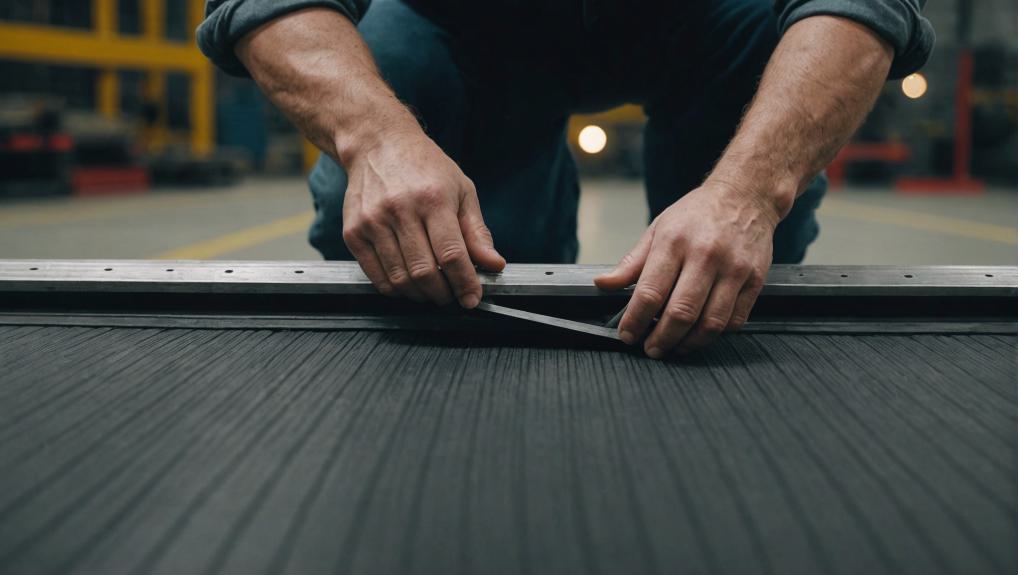
When you're gearing up to install fabric expansion joints, it's essential to get the process right from the start. First, you'll need to thoroughly assess the installation site. This isn't just about measuring the space; you must also account for environmental factors like temperature and chemical exposure that could impact the joint's performance. Next, preparation of the joint itself is key. Any oversight here can lead to failures down the line. But what might seem straightforward often holds potential pitfalls. I'll guide you through these initial steps, and then we'll tackle the critical final adjustments that guarantee a seamless and secure fit. Curious about the common oversights that could jeopardize your installation? I'll reveal these soon.
Assessing the Installation Site
Before installing fabric expansion joints, you must carefully evaluate the environmental conditions and physical space of the installation site. You'll need to take into account several factors that can greatly impact the performance and lifespan of the joints.
Firstly, check the temperature range at the site. Fabric expansion joints vary in their tolerance to heat and cold, and choosing one that isn't suited for your temperature conditions can lead to premature failure. You also need to assess any chemical exposures. Are there aggressive gases or vapors present? Certain materials resist chemicals better than others, so identifying these hazards is important.
Next, evaluate the physical space. How much room do you have for the joint? You'll need enough space not only for the joint itself but also for any necessary movements it has to accommodate. This includes both axial and lateral shifts which might occur during operation.
Don't forget to take note of the surrounding infrastructure. Are there sensitive components or machinery nearby that could be affected by the installation or operation of the joint? Ensuring there's adequate clearance and support structures is essential.
Preparing the Expansion Joint
Having assessed the installation site, you'll now need to prepare the fabric expansion joint for installation. This step is important to guarantee a smooth and successful setup. Here's how you can get this done effectively:
First, you've got to inspect the fabric expansion joint itself. Look for any defects or irregularities that might compromise its function. You don't want any surprises once everything's fitted!
Next, you'll clean the joint. Remove any dust, debris, or residues that might've settled on it during storage or shipping. A clean joint ensures better adhesion and sealing when installed.
Lastly, check the alignment. Ensure that the expansion joint aligns correctly according to your earlier assessments and the specific requirements of the system. Misalignment can lead to ineffective operation or even damage under stress.
Here are a few additional tips to keep in mind:
- Handle with care: Fabric expansion joints can be delicate. Avoid any sharp bends or folds that might cause damage.
- Temperature check: Make sure the joint and the installation area are at an appropriate temperature if specified.
- Tool readiness: Have all the necessary tools at hand to avoid interruptions once you start the installation process.
Preparing correctly sets the stage for a successful installation!
Executing the Installation Process
Now that you've prepared the fabric expansion joint, let's move on to the installation process. This stage is important and demands your full attention to ensure everything fits perfectly and functions as intended.
First, align the expansion joint accurately within the ductwork. It's essential that it's centered to avoid any undue stress or misalignment that could affect performance. You'll then secure the joint using the appropriate fasteners provided by the manufacturer. Make sure you don't over-tighten, as this could damage the fabric.
Next, inspect the seals and the overall installation for any gaps or misalignments. It's crucial that the joint is sealed properly to prevent any leaks. Here's a simple table to help you keep track of these steps:
| Step | Detail | Checkpoint |
|---|---|---|
| Alignment | Center the joint within the ductwork | Check for evenness |
| Fastening | Secure with fasteners, avoid over-tightening | Inspect for damage |
| Sealing | Ensure all seals are intact | Check for leaks |
| Final Inspection | Review the entire installation | Confirm functionality |
Conclusion
You've now mastered the three essential steps for installing fabric expansion joints.
First, you assessed the site, ensuring it was suitable for installation.
Then, you prepared the joint by checking for any defects and verifying alignment.
Finally, you executed the installation with precision, aligning and securing the joint properly.
By meticulously following these stages, you've set yourself up for a successful, reliable setup.
Great job ensuring the longevity and effectiveness of your expansion joints!
© Copyright 2024. All RIghts Reserved
